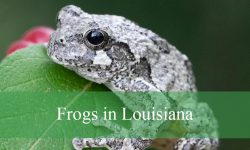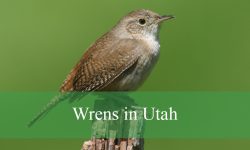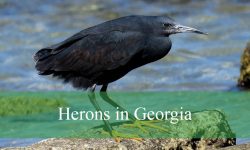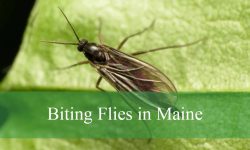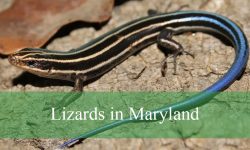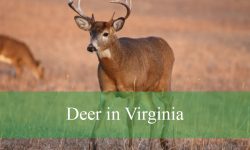Birdwatching in Oregon offers countless opportunities to witness raptors in their natural element, and among the most thrilling are the falcons. With their sharp eyes, swift wings, and predatory grace, falcons stand out as some of the most exciting birds to observe in the wild.
Each species of falcon in Oregon carries its own unique charm, from the tiny but fierce American Kestrel to the mighty Peregrine Falcon, known worldwide for its breathtaking dives. Whether perched on a fence post in farmland or soaring above a rocky gorge, falcons inspire awe in birders of all levels.
For those who love the challenge of spotting raptors, Oregon’s diverse landscapes—coastal cliffs, open valleys, sagebrush plains, and city skylines—provide prime viewing grounds. Learning where and when to look will greatly enhance your chances of seeing these masters of the sky up close.
Different Types of Falcons Found in Oregon
Peregrine Falcon
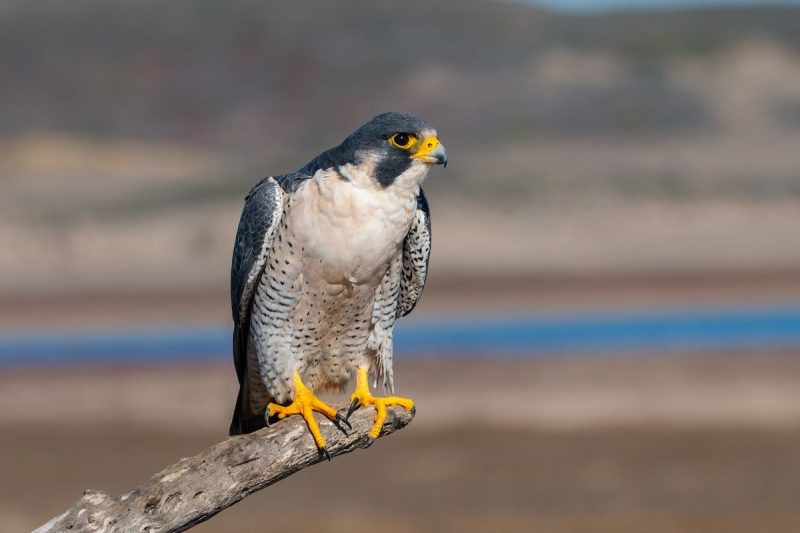
The Peregrine Falcon is one of the most remarkable birds of prey, celebrated for being the fastest animal on earth. When in a hunting dive, called a stoop, it can reach speeds over 200 miles per hour, making it an unmatched aerial predator. Its streamlined body, long pointed wings, and powerful muscles are built for speed and agility in flight.
In appearance, Peregrines display a blue-gray back, barred white underparts, and a distinctive black “helmet” that contrasts sharply with their yellow eye-ring and beak. Juveniles look browner with vertical streaks on the chest, but they gradually take on adult plumage over time. This plumage pattern makes them relatively easy to identify once you get a close look.
Their diet primarily consists of medium-sized birds such as pigeons, shorebirds, and waterfowl. Peregrines are ambush hunters that strike from great heights, knocking prey out of the sky with incredible precision. They may also hunt bats and occasionally small mammals, but birds are their preferred target.
Peregrines typically nest on high cliffs or skyscrapers, making them well-adapted to both natural and urban environments. They scrape shallow depressions in gravel or rock ledges rather than building stick nests. This adaptability has helped them recover strongly after decades of decline due to pesticide use.
In Oregon, the Peregrine Falcon can be found year-round, particularly near the Columbia River Gorge, coastal cliffs, and cities like Portland where tall buildings provide ideal nesting sites. They are a true success story of conservation, having rebounded after near extinction in the mid-20th century.
American Kestrel
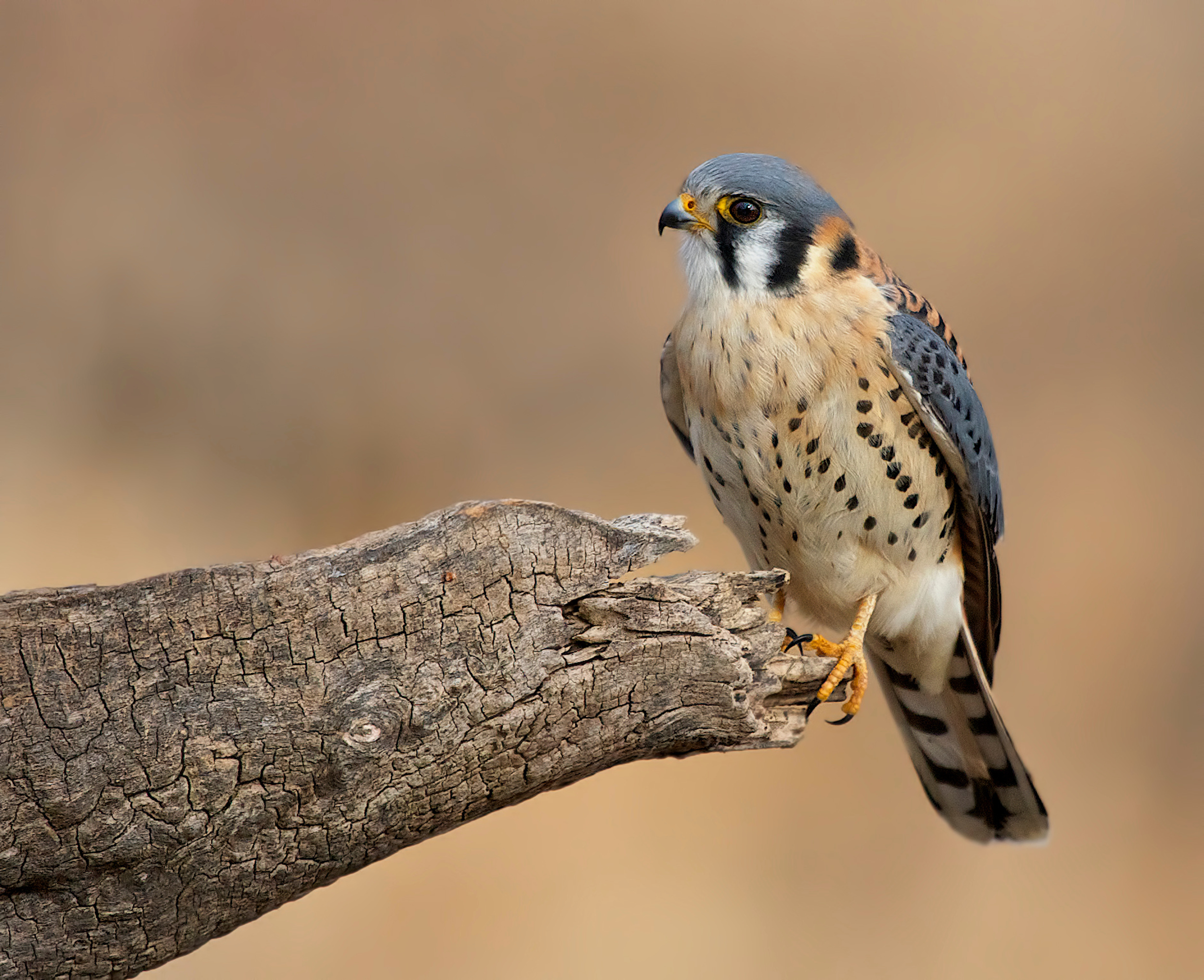
The American Kestrel is the smallest falcon in North America but also one of the most colorful. Often described as “sparrow-sized,” this falcon measures only about 9 to 12 inches in length. Despite its small size, it is a fierce and efficient hunter, capable of taking down prey much larger than itself.
Its plumage is striking, with rusty-red back and tail feathers, blue-gray wings in males, and two distinct black facial streaks resembling sideburns. Females are more rufous overall with less blue on the wings. Both sexes have a distinctive bobbing tail behavior that helps birdwatchers quickly recognize them.
Kestrels feed on a variety of prey including insects, small rodents, lizards, and occasionally small birds. They are often seen hovering in place over fields before swooping down to capture prey with their talons. This hovering ability, rare among falcons, makes them an exciting bird to observe.
American Kestrels prefer open habitats such as meadows, grasslands, and agricultural fields where prey is abundant. They nest in tree cavities, rock crevices, or man-made nest boxes since they cannot excavate their own nesting sites. Providing nest boxes has helped maintain kestrel populations in many regions.
In Oregon, kestrels are widespread and can be spotted throughout the state, especially perched on telephone wires or fence posts scanning for prey. They remain year-round in many areas, although northern populations may migrate south during colder months.
Merlin
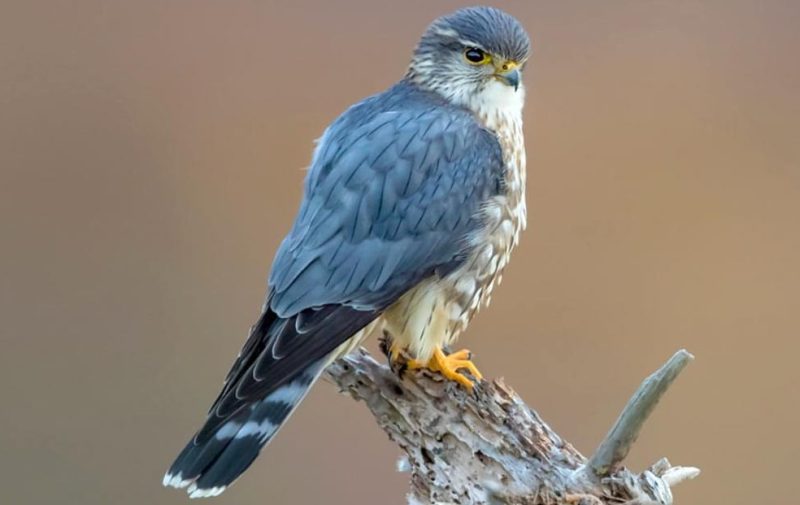
The Merlin is a small, stocky falcon known for its powerful flight and aggressive hunting style. Unlike the American Kestrel, Merlins do not hover but instead use rapid wingbeats and sudden bursts of speed to chase down their prey. They are slightly larger than kestrels but more compact than Peregrines.
Merlins are often identified by their dark plumage, with slate-gray upperparts in males and brown in females. Their underparts are streaked heavily, and they lack the distinct facial markings of other falcons. Their overall appearance is more subtle, but their fast and direct flight is a giveaway.
Their diet consists mostly of small songbirds, which they capture in high-speed pursuits. Unlike Peregrines that dive from above, Merlins chase prey horizontally across open spaces. They may also eat large insects and occasionally small mammals.
Merlins prefer open woodlands, grasslands, and coastal areas during migration. They often nest in old crow or magpie nests, rather than building their own. During winter, they can be seen in open habitats hunting over fields and wetlands.
In Oregon, Merlins are primarily seen during migration and winter months, particularly in the Willamette Valley, along the coast, and in eastern grasslands. They are less common breeders here but can be observed regularly outside of summer.
Prairie Falcon
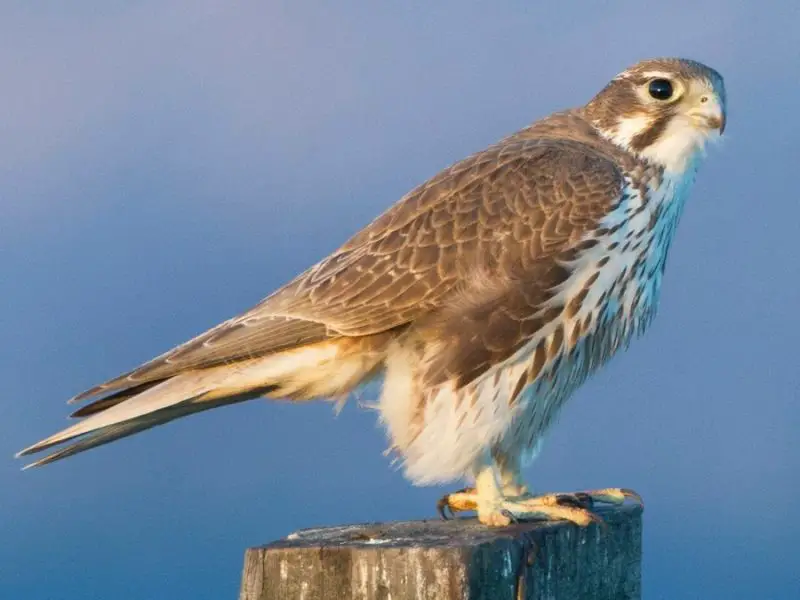
The Prairie Falcon is a bird of open country, perfectly adapted to dry and rugged landscapes. Slightly smaller than the Peregrine, it has long pointed wings and a pale brown overall coloration that helps it blend into arid surroundings. Its light appearance makes it distinct from the darker Peregrine Falcon.
Field marks include a pale face with a dark “mustache” mark, creamy underparts with streaks, and dark wing pits that are noticeable in flight. Its sandy-brown upperparts make it easy to identify when compared with other falcons.
Prairie Falcons hunt a wide variety of prey, including ground squirrels, pigeons, doves, and other small to medium-sized birds. They are powerful hunters, often flying low and fast across the ground before striking suddenly. Their hunting style is less about diving and more about surprise and endurance.
They prefer dry, open environments such as deserts, grasslands, and sagebrush plains. Nesting usually occurs on cliffs, where they scrape shallow depressions to lay eggs. Prairie Falcons are highly territorial and will aggressively defend their nesting sites.
In Oregon, they are most commonly found in the eastern part of the state where arid conditions dominate. Places like the high desert around Bend and the sagebrush regions of southeastern Oregon provide excellent habitat for these falcons.
Gyrfalcon
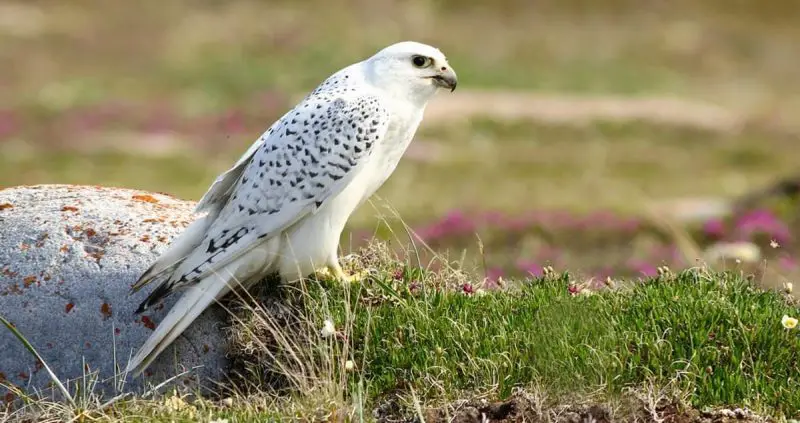
The Gyrfalcon is the largest falcon in the world, and while rare in Oregon, it is an occasional winter visitor from the Arctic. This majestic bird has a powerful build with broad wings and a thick chest, giving it a commanding presence in the sky. Its size alone sets it apart from other falcons in the region.
Gyrfalcons come in three color morphs: white, gray, and dark. The white morph is particularly striking and highly prized among birdwatchers. The gray form is more commonly seen in North America, with barred underparts and a mottled back.
Their diet consists mainly of birds such as ptarmigan and waterfowl, but they are capable of taking down large prey including hares. Gyrfalcons rely on strength and persistence in hunting rather than the high-speed stoops of Peregrines.
These falcons breed in the Arctic tundra, nesting on cliffs or rocky outcrops. They are highly adapted to cold climates and only venture farther south in winter when food availability changes. Their presence in temperate regions like Oregon is always noteworthy.
In Oregon, Gyrfalcons are very uncommon but may occasionally appear in open country during harsh northern winters. Birders in eastern Oregon sometimes spot them hunting waterfowl around lakes and wetlands, making these sightings a special treat.
Comparison Table of Falcons in Oregon
Falcon Species |
Size & Appearance |
Main Diet |
Preferred Habitat |
Presence in Oregon |
|---|---|---|---|---|
Peregrine Falcon |
Medium-large, blue-gray back, black helmet |
Medium-sized birds |
Cliffs, rivers, urban areas |
Year-round, especially Columbia Gorge & coastal cliffs |
American Kestrel |
Smallest falcon, colorful, rusty-red back, blue-gray wings in males |
Insects, rodents, small birds |
Open fields, grasslands, farmlands |
Widespread year-round |
Merlin |
Small, stocky, dark plumage, streaked chest |
Small songbirds |
Open woodlands, grasslands, coastal areas |
Winter & migration visitor |
Prairie Falcon |
Medium, sandy-brown, pale face with dark mustache |
Ground squirrels, pigeons, small birds |
Dry open country, sagebrush plains |
Eastern Oregon year-round |
Gyrfalcon |
Largest falcon, variable morphs (white, gray, dark) |
Waterfowl, ptarmigan, hares |
Arctic tundra, cliffs |
Rare winter visitor |
Best Time and Places to Observe Falcons in Oregon
Falcon watching in Oregon can be rewarding throughout the year, but the best times vary depending on the species. Spring and summer are excellent for observing Peregrine Falcons, especially along the Columbia River Gorge and coastal cliffs where they nest. These birds are also visible in cities like Portland, where tall buildings provide nesting ledges.
Best Time and Places to Observe Falcons in Oregon
Falcon watching in Oregon can be rewarding throughout the year, but the best times vary depending on the species. Spring and summer are excellent for observing Peregrine Falcons, especially along the Columbia River Gorge and coastal cliffs where they nest. These birds are also visible in urban areas like Portland, where skyscrapers serve as substitute cliffs.
If you want to spot the American Kestrel, look during late spring through fall in open meadows, agricultural lands, and grasslands across the state. They perch on fence posts and wires, making them one of the easiest falcons to observe in Oregon.
Merlins are most often seen in winter and migration seasons. The Willamette Valley and Oregon’s coastline are common stopovers. They are less frequent breeders but regular migrants.
The Prairie Falcon is best found in eastern Oregon year-round, especially in sagebrush deserts and the high desert plains around Bend and southeastern counties. Their preference for wide-open country makes spotting them a unique experience.
For the rare Gyrfalcon, the best chance is in harsh winters when they wander south from the Arctic. Birders may occasionally spot them around lakes, wetlands, or open fields in eastern Oregon. Sightings are infrequent, but highly prized.
FAQs about Falcons in Oregon
What is the most common falcon in Oregon?
The American Kestrel is the most widespread falcon in Oregon, often seen perched on wires in rural areas.
Where can I see Peregrine Falcons in Oregon?
You can find them along Columbia River Gorge cliffs, on coastal headlands, and even in Portland’s downtown skyline.
Do falcons live in Oregon year-round?
Yes, several species such as the Peregrine Falcon, American Kestrel, and Prairie Falcon live in Oregon year-round, while Merlins and Gyrfalcons appear mainly in winter.
Are falcons dangerous to humans or pets?
Falcons are not dangerous to humans, but they may prey on very small pets like chicks or tiny birds. They mostly hunt wild prey such as songbirds, rodents, and insects.
What is the rarest falcon in Oregon?
The Gyrfalcon is the rarest, seen only in certain winters when it moves south from the Arctic. Spotting one in Oregon is considered a rare birding highlight.

